Service
Futures Design
By carefully considering multiple possible futures, we can develop strategic plans for the years ahead, and respond to the VUCA era with greater foresight.
Today's corporate environment is characterized by an increased uncertainty often referred to as the VUCA age. It is an environment where the future becomes increasingly difficult to anticipate, and staying ahead of the competition involves a long-term view of the future and a strategic approach to sustainable growth, rather than relying on market trends and technical advances. mct can help companies sort through the possible futures to identify plausible desired futures, by envisioning possible scenarios based on signals of changing values.
Future-focused strategic thinking is foundational to building a sustainable competitive advantage and identifying opportunities earlier. With design thinking and scenario planning in the development of future strategies, companies are able to respond to VUCA with greater flexibility and foresight.
Insights about the future through "signals"
Futures Design collects trends and signals to understand how values are changing. Signals are precursors to established trends, whose value and impact we may not yet realize. By including our focus on analyzing such items, we can explore possible directions of future scenarios. Sometimes a common direction can emerge from signals coming from different areas. Without being constrained by boundaries of different fields or preconceptions, we take an open, broad perspective to glean emerging insights around what is happening in the world today.
Imagining the future
Insights point to a novel vision for the ways things could be, new ideas, solutions, products, strategies, and even fantastical scenarios of the future may emerge. Insights create the foundation for imagining the future for a project, organization, sector, industry, or physical place in the world. Facing the uncertainty of the future, in which many things are possible, developing scenarios upon insights gives strategic foundation for action. This serves as a provisional compass for avoiding unwanted scenarios and taking action towards the future we seek.
Process & Approach
Our approach to Futures Design is based on a design thinking approach of repeated divergence and convergence. By exploring trends and signals of the future, we can identify insights that may shape the future, and then exploring scenarios that could describe different futures, we can generate items that describe challenges and goals of future consumers.
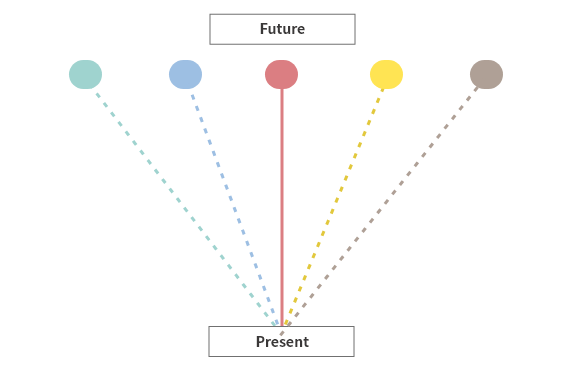
Step 1.
Collect signals, understand trends, and gain insights
Conduct a kick-off session to confirm project objectives, design the process after organizing existing data, and determine the scope of data collection required. We often use STEEPV (Social, Technological, Environmental, Economic, Political, Values) framework to structure data collection. Project members find the "signals of change" that lead from the present to the future, discussing with each other to, inspiring each other to skillfully scan more widely. It's important also to be aware that by speculating on the future, we are in a way also creating the future. Even as researchers, we are actors in creating a desired future. By analyzing the theme with the STEEPV framework, we can also identify areas with high social impact.
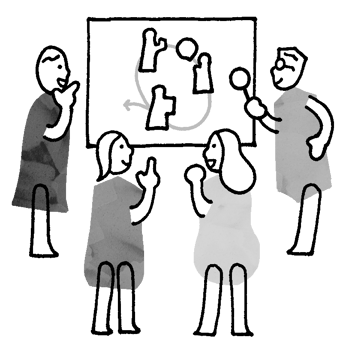
Step 2.
Create future scenarios
In this conceptual phase, futures are imagined and fleshed out based on logical extension of the data collected. Futures Design is not about confirming predetermined future, or defining a future for risk preparation, but thinking about realistic, discontinuous, exciting, and provocative futures based on seeds of change, to help new ways of looking at things around us, and to provoke constructive debate and conflict within the company.
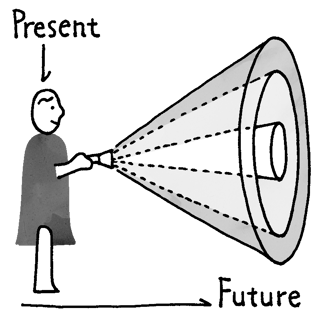
Step 3.
Determine directions of the future
The "projected future" that is simply an extension of the present is already the focus for most people. With the help of the Future Cone, we can expand our view to also consider "probable futures", "plausible futures", "possible futures", and even "preposterous futures". Within these, we can also consider what our "desired future" would be.

Step 4.
Backcasting
Modern companies that seem to grow by leaps and bounds, such as Google and Tesla, typically have an MTP helping them navigate uncertain environments. For example, Netflix has an MTP of "entertaining people around the world" and hasbeen able to fully realize this. When Netflix was founded in 1997, going to the video rental store was the norm, but Reed Hastings felt the hassle of renting and returning DVDs was unnecessary, and launched the industry's first home-delivery DVD service. In 2007, the company turned their attention to streaming services. Although internet connections at the time were insufficient, Netflix anticipated not only the arrival of higher-speed connections, but also the implications this would have. With their ability to identify and navigate massive shifts, along with a guiding MTP, Netflix has been able to make powerful moves successfully.

関連記事
-
-
2025.09.10
Series|合成ユーザーを使ってビジネスの種を見つける5日間―これまでのシリーズブログの振り返り
- 「series 合成ユーザーを使ってビジネスの種を見つける5日間」を簡単に振り返りながら、「合成ユーザー×リアルユーザー」のハイブリッドリサーチがどのように仮説構築を進化させるのかを、あらためて整理してお伝えします。 また、「合成ユーザー」に興味を持たれた方へ、無料オンライン相談会をご紹介しています。 ぜひ、ご覧ください。
- グローバル
- デザインリサーチ
- フューチャーデザイン
-
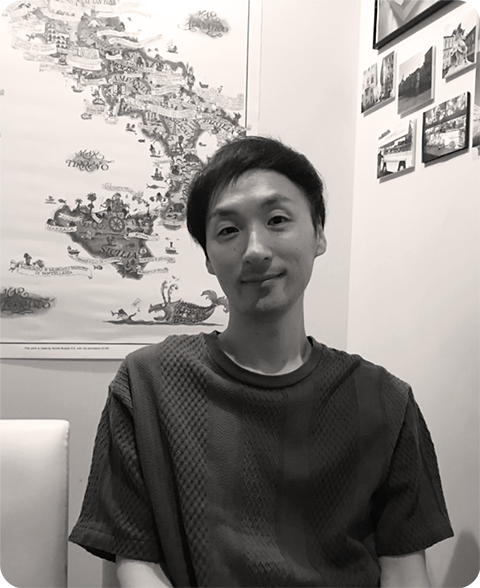
-
Nobuo Masuda
株式会社mct エスノグラファー/エクスペリエンスデザイナー
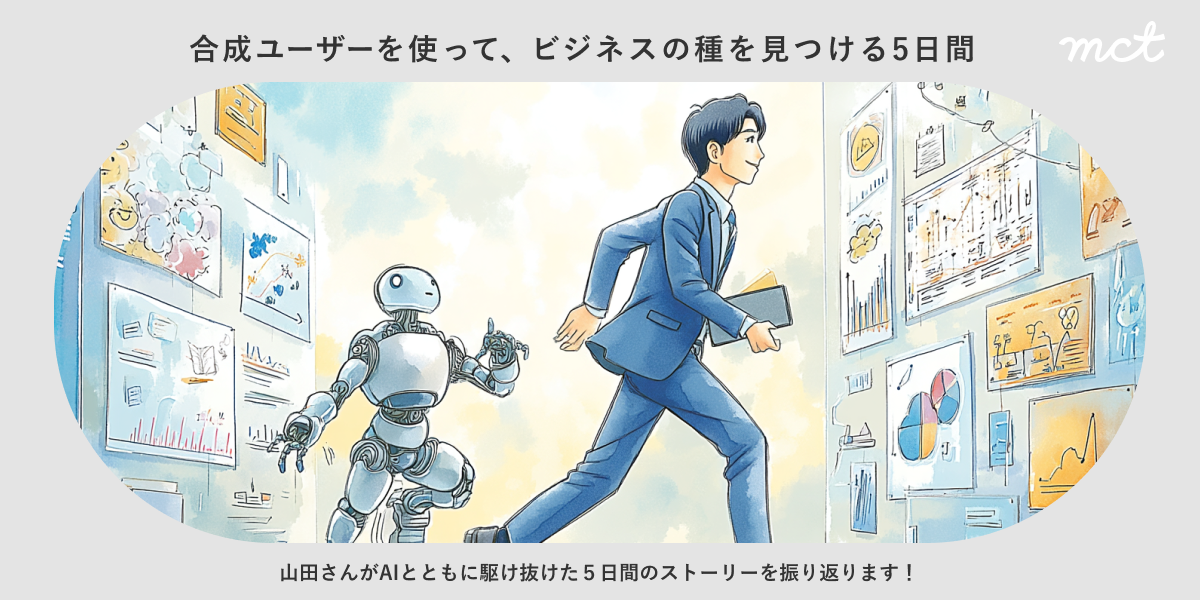
-
-
-
2025.08.22
Series|合成ユーザーを使ってビジネスの種を見つける5日間―DAY5:AI を活用した5日間で、リサーチの常識が変わった
- 新連載「合成ユーザーを使って、ビジネスの種を見つける5日間」 5日目 ついに、5日間のリサーチ実験も最終日。 「合成ユーザーと会話して、仮説を立ててみよう」そんなちょっと大胆なアイデアで始まったこの1週間。 でも今、山田さんの手元には、アジア3カ国における朝食ビジネス戦略のたたき台が出来上がっています。しかも、文化的価値観までしっかり踏まえた“リアルな構想”として。
- グローバル
- デザインリサーチ
- フューチャーデザイン
- AI
-

-
Keisuke Minowa
株式会社mct エクスペリエンスデザイナー
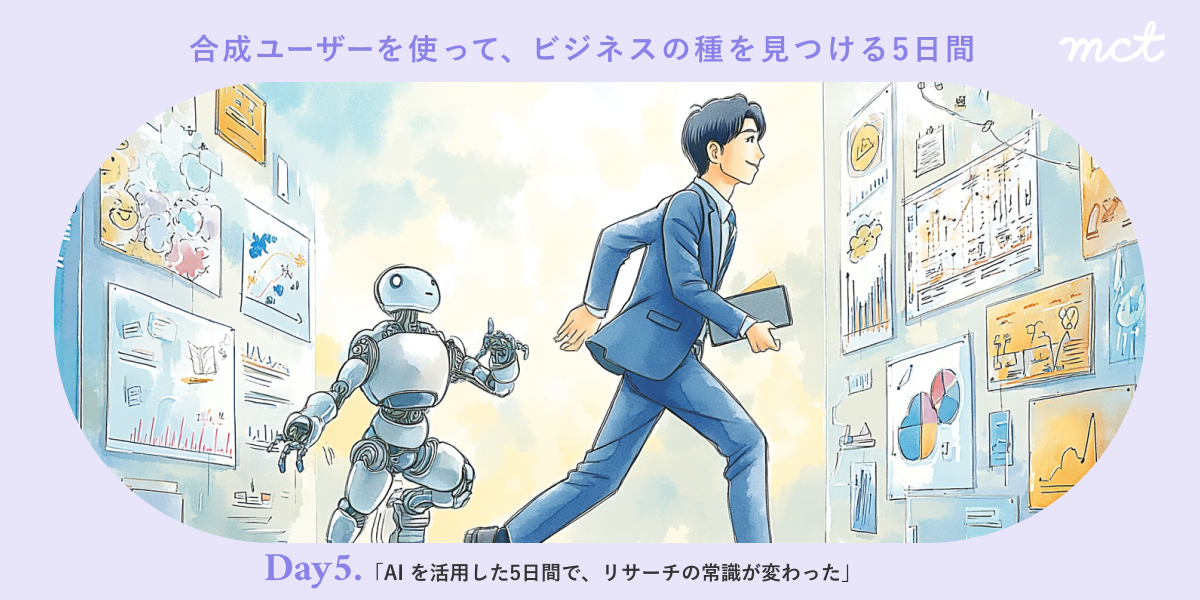
-
-
-
2025.08.22
Series|合成ユーザーを使ってビジネスの種を見つける5日間―DAY4:AI 調査の結果をチームで議論したら、意外なアイデアが生まれた
- 新連載「合成ユーザーを使って、ビジネスの種を見つける5日間」 4日目 山田さんは、今週得たAI分析とリアルな現地情報をチームと共有し、 いよいよ「朝食ビジネス」のアイデア出しに挑みます。ところが…。
- グローバル
- デザインリサーチ
- フューチャーデザイン
- AI
-
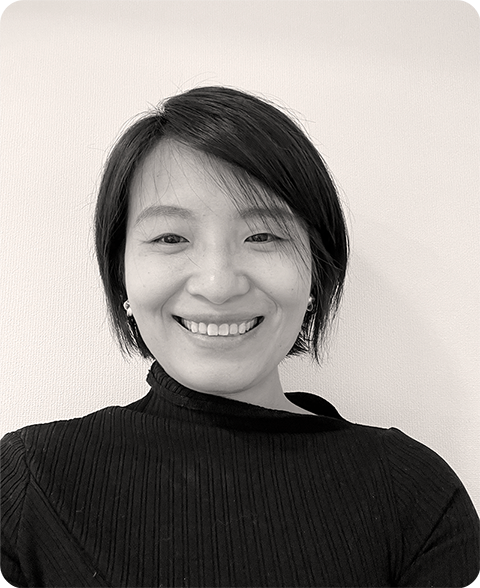
-
Wenxin Huang
株式会社mct エクスペリエンスデザイナー
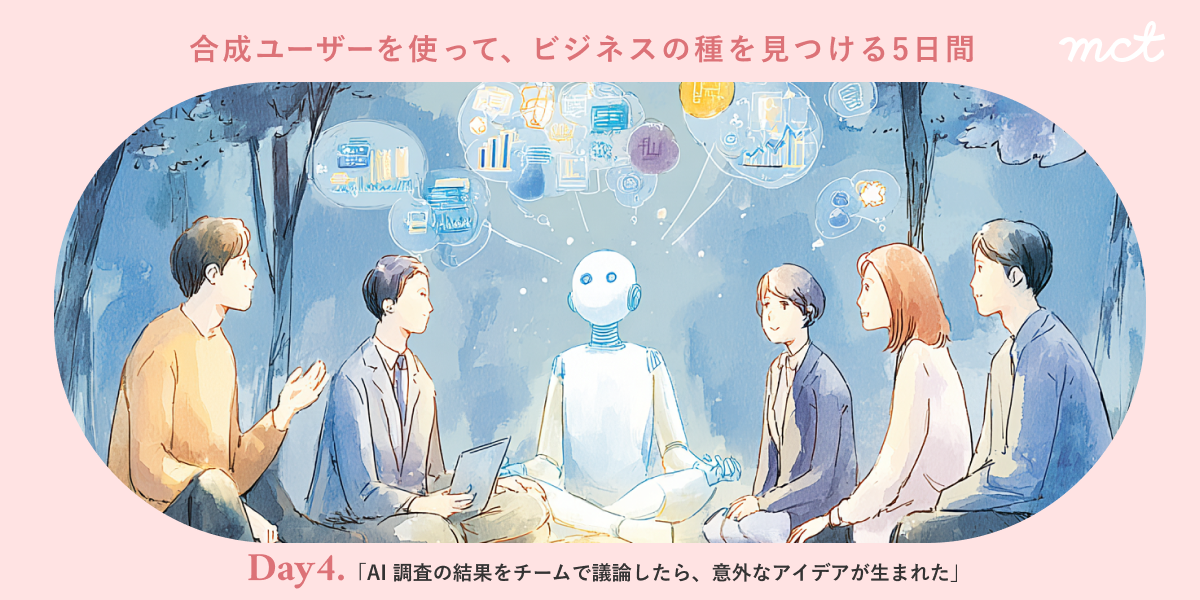
-
-
-
2025.08.22
Series|合成ユーザーを使ってビジネスの種を見つける5日間―DAY3:AI の回答は本当に正しい?実際の人と比較検証してみた
- 新連載「合成ユーザーを使って、ビジネスの種を見つける5日間」 3日目 昨日は、AIと会話するだけで、海外の文化的価値観が見えてくる──そんな驚きの体験をした山田さん。でもふと、こんな疑問が浮かびました。「これって本当に現地の人たちの感覚と合ってるの?」
- グローバル
- デザインリサーチ
- フューチャーデザイン
- AI
-

-
My Ha Thi TRAN
株式会社mct エクスペリエンスデザイナー/ストラテジスト
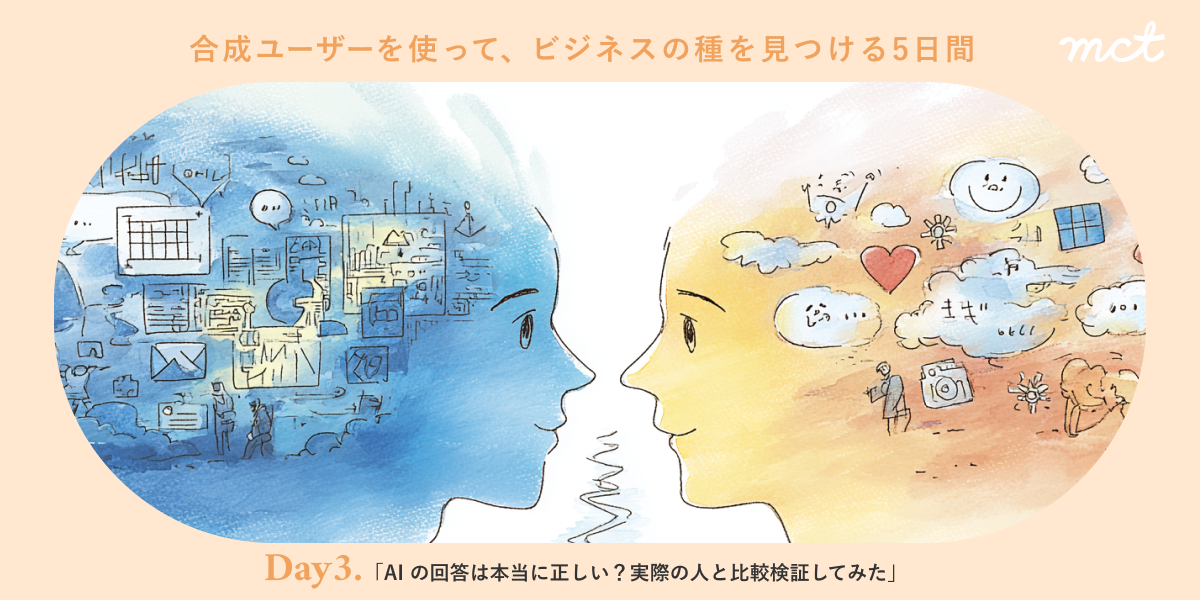
-

